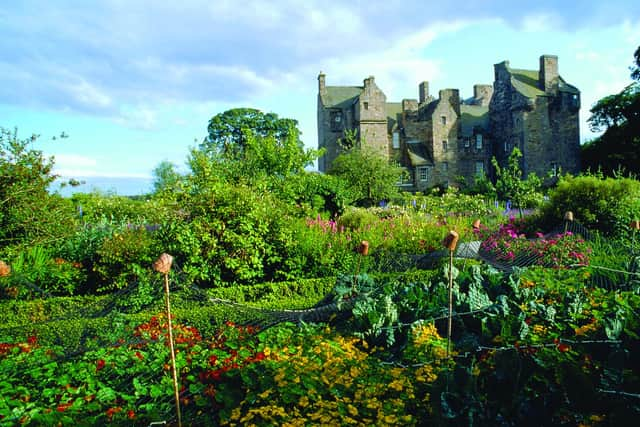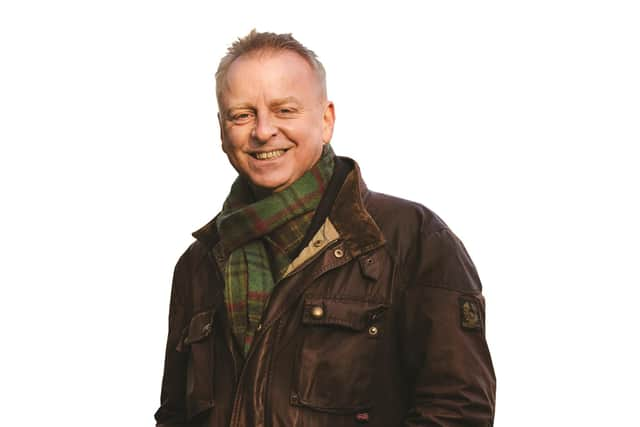Summer travel 2022: Interview with National Trust for Scotland chief executive Philip Long
How did you get started? My degree was in visual arts, specialising in sculpture, but I also studied art history and architectural history. I then completed a postgraduate degree in gallery studies. My father is a retired architect, so that has always been part of my interest but I don’t think I made definite long-term career choices, I just followed what I found interesting.
What led you to your current position? After I graduated, I worked for the Fine Arts Society in Glasgow, which helped me understand operating a commercial business. But also it was a gallery that took a real lead in promoting Scottish and British art and design, so I learnt more about that than I ever did at university. That led me to the job at the National Galleries [Philip was senior curator at the Scottish National Gallery of Modern Art], and gave me the responsibility of managing places but also working to engage people.
Advertisement
Hide AdAdvertisement
Hide AdI’m very lucky to have had this career. It has allowed me to satisfy my curiosity about all sorts of creativity and champion it for wider understanding. [He was also founding director of V&A Dundee and received an OBE in 2020 for services to culture and heritage.]


What is your typical day like? My task is to both manage and represent the NTS. Everyday has important decisions – thinking about the future policy direction.
For example, the Trust is responsible for thousands of acres of peatland, which is increasingly important for carbon capture. So we have a responsibility to not just understand that but lead the conversation with reference to climate change.
In the last couple of years there hasn’t been much travel, but we cover the whole of the country so I now get to go to a lot of these places which I really enjoy. The Trust manages everything from a traditional printing shop, Robert Smail’s Printing Works in Innerleithen, to the islands of St Kilda, a Unesco World Heritage Site, so there is never a dull moment. I learn something new every day.
What advice would you give someone wanting to follow in your footsteps? Get in touch about the opportunities. NTS is defined as heritage sector, but that disguises the range of professions that we need. We have everything from curators and conservationists to hospitality, marketing, accounting, surveyors, IT specialists and gardeners. There are no shortages of career opportunities, you just need the passion for conservation.


What innovations do you see making the biggest difference in the future? There is no doubt that technology will help, not least how it can give increased access to our collection. We have paintings, manuscripts and artefacts across the Trust’s estates, but sometimes they are in remote locations. So we need to think about how digital technology can provide more access to people, not just in Scotland but around the world.
I was in the US recently and the passion for our history and heritage there is extraordinary and so we have a worldwide audience we need to think about.
It can also help tell the story at individual sites. Something like The Battle of Bannockburn Experience in Stirling used cutting-edge technology when it opened in 2014, but things evolve so quickly we are now planning to update it.
Advertisement
Hide AdAdvertisement
Hide AdAnd how we are going to adapt to climate challenges without compromising our design heritage is one of the most important ways that technology will assist us.
What does the NTS offer its members and visitors? The NTS is for everyone and we have a duty to make sure our venues are accessible for all. We want engagement with as many people as possible.
One of the most cost-effective ways is through membership and we believe it is very good value – families have always enjoyed visiting and the family membership is great value – but we would also like to get the message over that we are a charity.
Supporting the places we care for is really important both at home and to how Scotland is perceived around the world.
We have to make sure we are providing reasons for people to come and visit our sites and to get involved again after the last two years. For example, we are working with the Young Scot organisation again and anyone with a Young Scot card can visit a NTS property for £1 – but we have to make sure that when people get there what we are offering is meaningful to them; it is inspiring.
Volunteering is the backbone of the Trust and the programme also grounds our properties in their local communities.
How has the organisation coped with recent challenges? People don’t realise what they have until it is taken away from them. Scotland has a great tradition of art and culture being very accessible, and life without them becomes quickly two-dimensional, so while the pandemic was a challenge, it perhaps reminded us of what we value.
The NTS has been around for longer than most people can remember – we celebrated our 90th anniversary last year – it is part of Scotland, but it relies on the generosity of members, volunteers and visitors.
Advertisement
Hide AdAdvertisement
Hide AdWhich NTS sites would you recommend in particular? Kellie Castle near Pittenweem is fascinating. The Lorimer family restored it in the 19th-Century and made it a place of creativity and inspiration combining the restoration of a house with a beautiful garden. I’ve always seen that as a pioneering project which was a forerunner for the work of the Trust.
I would also pick out Mar Lodge Estate, Braemar, which I’ve visited with my family for many years. The Trust manages 70,000 acres here, which stretches to the wildest parts of the Cairngorms, and it is a wonderful place to explore.
The other property I would single out is Hill House, Helensburgh. Charles Rennie Mackintosh is recognised around the world, and for the Trust to have responsibility for his greatest domestic work is a great privilege.
I love it because the Mackintosh’s interiors can sometimes overshadow the exterior – but by building a box around the house visitors can get a really different view. You can walk over the top of the house and the information about the work adds another fascinating dimension.
The challenges of conservation are huge, but it is a good example of how we care for properties in a way that will ensure that they are there for generations to come.
Life file
Born and raised Edinburgh
Family Married, with two sons at university. My wife also works for a charity.
First job While at school I had a Saturday job, cleaning the cinema and then making the puddings in the cafe at The Calton Studios, Edinburgh – my first taste of working with visitors.
Hobbies I cycle and run in my spare time and spend as much time as I can hillwalking. And I like to visit galleries.
Advertisement
Hide AdAdvertisement
Hide AdFavourite holiday I prefer to go and see things and find out about the place that I’m visiting.
Plans for retirement I’m really excited to be with the Trust and we’ve just developed our ten-year plan, so I have no thoughts of retirement in the near future.
Personal motto Never think that you can’t learn from others – always be open to their expertise.